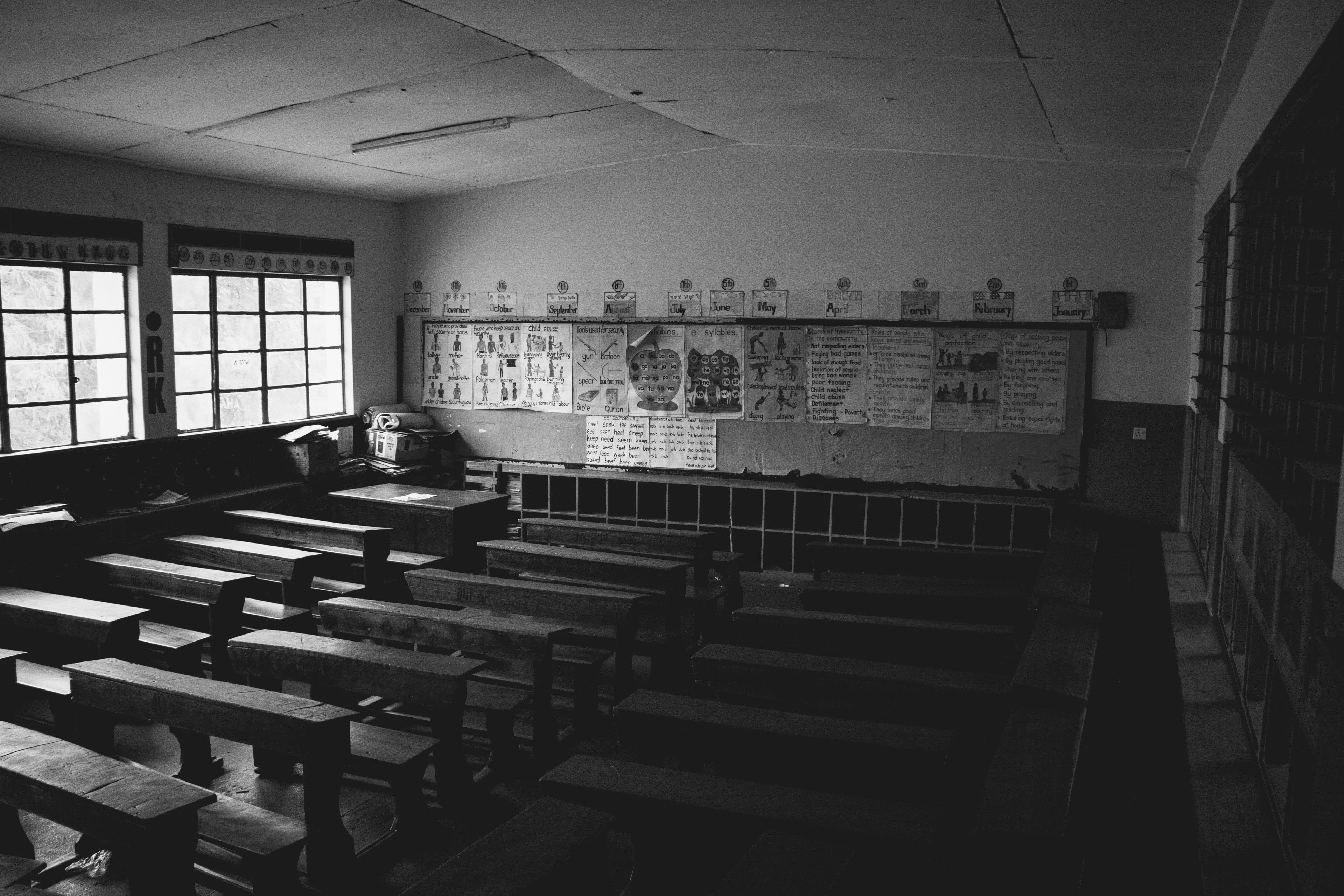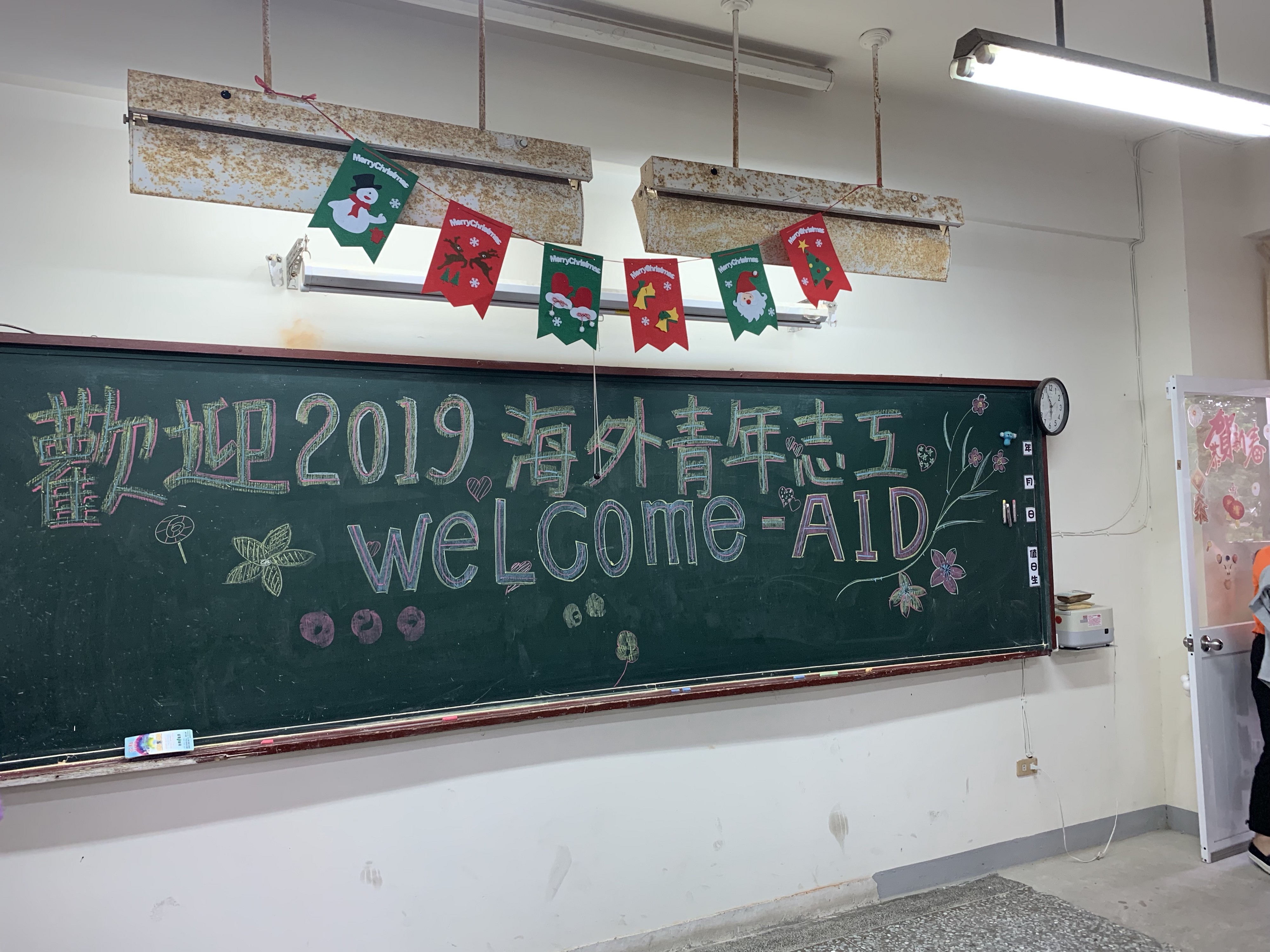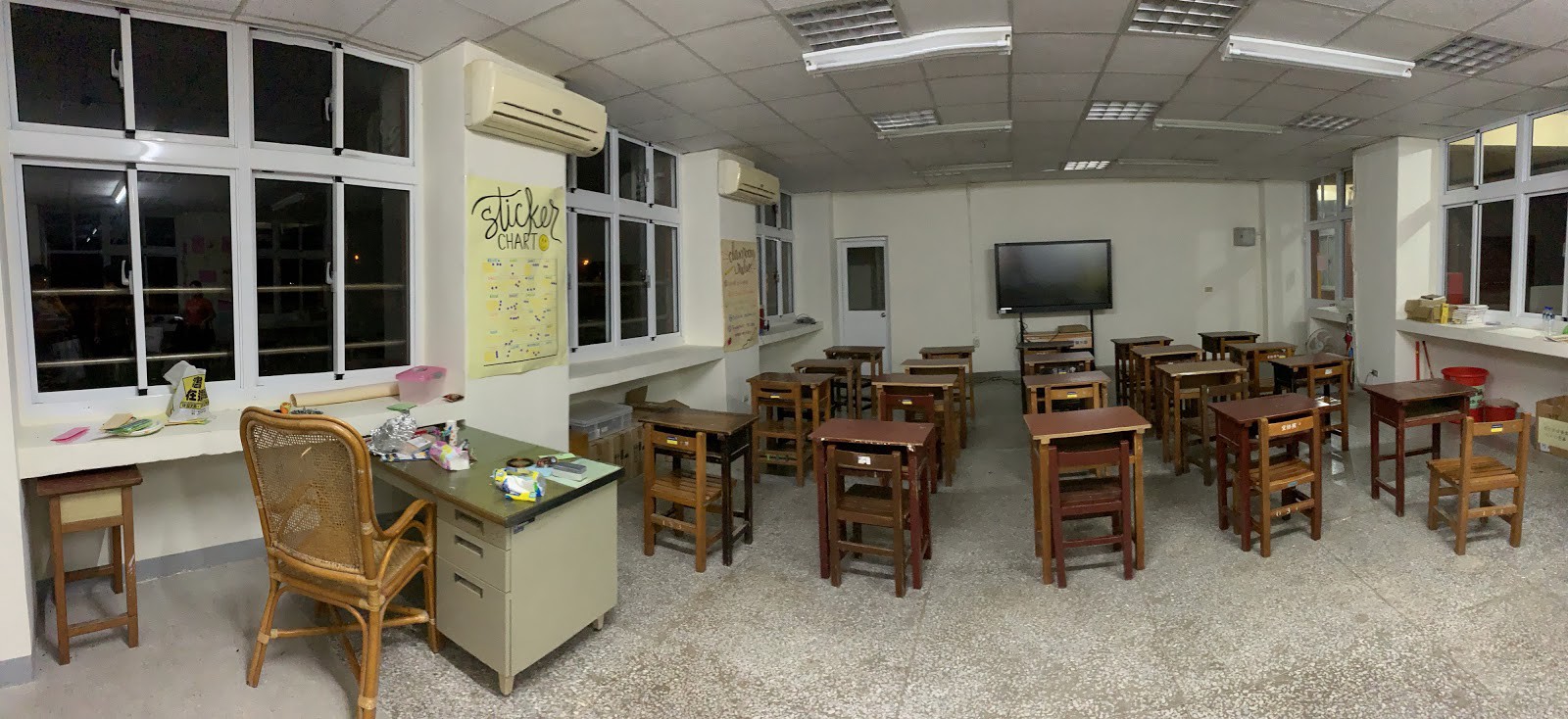
Photo by Mwesigwa Joel on Unsplash
”誰是我們的老師啊?(Who are our teachers?)“
“是我們 (We are)” I blurted.
Shit. We had just finished a whole week of training where we were specifically told to pretend not to know Chinese to encourage our students to speak English. And I had just responded in Chinese to their question. Great, first minute of “teaching” and I already messed up. How am I gonna survive 2 weeks of this?
Now, one week into Taiwan’s AID Program (that takes foreign young adults of Taiwanese descent and matches them with rural schools across the island to teach elementary or middle schoolers English for two weeks), I was overcome with uncertainty and trepidation. We were given a week of training, albeit very theoretical and abstract training: we designed a lesson plan and “taught” it to an audience acting as students. But this represented the perfect case of a well-ordered classroom with engaged students; it was nothing compared to being thrown into the deep end of needing to react to the vast space of actual questions and classroom situations. Over the next couple of weeks with my co-teachers, it felt like we were constantly working to keep our heads afloat. We faced a constant barrage of tasks and fires that demanded personalized attention. Every time we seemed to be getting a step ahead of the cruel game, something would go awry, and we’d be back to scrambling to catch up again. But all that swimming and firefighting translated into invaluable scars and lessons. After all, most learning happens when you sail far from the safe harbor of your comfort zone into uncharted lands and unseen dangers.
Learning to Teach

our first welcome to the school
POWER OF PLANNING
During the first week of training in Taipei, we were required to complete a rough outline for each day: the topic, the activities, etc. Of course, the plans were indispensable when it came to fleshing out the details of each class, but because they were made in a hypothetical world, they deviated wildly from the expected length and engagement level when implemented in an actual classroom.

an example of the two sides of the spectrum of specificity
As you can see from the screenshot, plans are only as useful as they are specific, and the same is true for instructions. The more specific and understood instructions are, the more uniform the outcomes will be. Thus, unclear and unspecific instructions will result in a crap shoot of results—some students will get it “right” (at least in the way you envisioned it) and others will get it “wrong.” Many times while teaching, I would ask a question, looking for a specific answer, and students would answer in a way that was different from what I expected but made sense with a different perspective on the question. Whenever this happened, I always tended to conclude that some students are better and “get it,” while the others need more work. However, dumping responsibility on individual students seemed like a cop out to avoid honestly evaluating my teaching ability and style. I realized that the problem often lies in the design of the activity, not with the abilities of students. Rather than continue to draw conclusions about students’ abilities, I started to change my reaction to these situations from making an automatic judgment about student skill to zeroing in on potential issues with the structure of the activity. Were the instructions clear and specific (alternatively, would I understand what to do if I was seeing it for the first time)? Did all the students actually understand what they needed to do and what they were working towards? Are there specific aspects of the activity that are unnecessarily confusing or unintentionally vague?
BUT… PLANS AREN’T PERFECT
One time, we spent hours planning out a game to teach students how to categorize items into corresponding stores. I was excited to see the students play it the next day because I was confident that it was a good combination of fun and learning, but my hopes were crushed when I saw the boredom creep in after just a few minutes. I was about to give in and move onto our next activity when one of my co-teachers, suggested making it more competitive with all teams going at once as opposed to each team sequentially. A simple but clever change made all the difference—the sputtering energy of the room suddenly roared to life. To work so hard on something and fail spectacularly is naturally tough, but it’s important to stay focused on what’s in your control. While planning ahead is important, learning how to be more adaptable and comfortable with plans flying off the rails is critical to ensuring both a positive learning environment and a healthy emotional state.

the frustration you feel when things don’t go according to plan (ft. Sheldon from Big Bang Theory)
RUNNING A CLASSROOM 101

the classroom we taught in
From an outsider’s perspective, one thing that may be less obvious about teaching is that it involves much more than just presenting a slide deck and preparing activities for the day. Actively running the classroom is a herculean task in its own right, and not something a typical liberal arts education prepares you to do. From my experience, “running the classroom” has three main components:
- Observing and noting students’ reactions while teaching and their interactions during activities.
- Intentionally structuring groups to balance dynamics.
- Monitoring your image in the view of students.
I was surprised by how much information I could glean from simply observing students. Even little things like how they react to having to do different types of activities or how they play games with their friends gives a lot of insight into their personalities, which translates into valuable information for catering lesson plans to the whole class. As a result, we were able to design a variety of activities, each of which played to the strengths of a subset of students.
For these activities, we started by splitting teams up randomly whenever we had team exercises, but because it was a small class, sometimes one team would end up getting the points of a game almost every round. By leveraging our observations on individual abilities and interpersonal dynamics, we were able to feign a purely random team selection approach while deliberately distributing the best English speakers and ensuring everyone had at least one familiar teammate. Although this seems like a small change at a high level, it translated into a visible increase in the health of competitive activities and level of engagement of working groups.
Everything seemed to be going smoothly until a co-teacher blindsided me one day with a comment that they thought the students weren’t taking me seriously because I was too nice. My immediate reaction was to reject the whole premise—“how could they not take me seriously? I’m the oldest one here, I’m so loud all the time, and they do listen to me, right?” At first, I tried to play it off as a joke, until I realized the other teachers agreed, at which point I forced myself to swallow my pride and try my best to truthfully evaluate myself from an outside perspective. It was true that I had to try a bit harder than other teachers to get the students’ attention. And, whenever I told them to speak in English to practice, often they would go back to speaking Chinese soon thereafter. Although the students’ altered perception of me didn’t significantly affect the classroom since I only taught briefly, small things, like appearing “too nice,” build up and can materialize in more solidly held beliefs that become problematic.
I found that these three lessons could be generalized to principles that apply to anything that involves managing a group of people.
- There’s a wealth of information in every moment; you have to make the effort to recognize it.
- Changing things at a structural level has exponentially more impact than putting bandages on surface-level issues.
- Evaluating yourself honestly from an outside perspective is critical to influencing people
The lessons I picked up seem to span a range of applications and levels of obviousness. I’m curious to hear experiences on either the teaching or learning side and what made them good or bad. What makes a productive learning environment and what detracts from one? What makes a great teacher – what do they do or how do they think? Message me or comment below if you have any thoughts; always curious to hear others' opinions :)
TL;DR: what I learned from teaching:
- Evaluate design before blaming individuals: Be specific and clear for uniform outcomes and be general and open-ended for creative outcomes.
- Plan for the worst in advance, but in the moment, follow your gut and evolve to the situation.
- Address the root problem by changing the structure and the rules, not the symptoms by playing by the existing rules.
A Clash of Mindsets
When I decided to apply and join this program in March, a lot of friends were perplexed why I had chosen to spend half of my last summer vacation in rural Taiwan teaching English. Of course the opportunity to give back to the less fortunate drove me , but more selfish reasons also played in; I wanted to experience a completely different living environment and lifestyle, to learn first-hand about effective teaching, and to regain cultural ties that had slowly deteriorated from as I became more integrated in American society.
I went to Taiwan immediately after finishing the ~classic~ post grad Asia trip, traveling to Japan, Korea, and Thailand for a month. Moving to Taiwan was a drastic lifestyle and environmental shift. From having complete freedom in my daily schedule to being forced to abide by a 10PM curfew and dress code (at least during the training week), not to mention suddenly being surrounded by younger people (most of the other volunteers were either rising high school seniors or college freshmen), the shift made it feel like I had transported to a different world. Given the restrictive environment and primed by my post-traveling mentality, I felt apprehensive about having to spend a whole month completing the program initially.
But after I actually moved out to the countryside and started teaching the kids, it started feeling like all the pieces were falling into place. The combination of welcoming people, refreshing atmosphere, and delicious food all fed into ushering in a strong sense of belonging. I’m grateful to have had an opportunity to live in rural Taiwan and learn from a people with a humble and pure-intentioned outlook on life(one very different from the self-promoting and two-faced outlook commonly used to depict Silicon Valley). From the squatting toilets (free workout whenever you have to go!) to the cheap and amazing food and the savage roasts that our Taiwanese teacher dished out, I’ll always cherish my time in Taiwan.
One big part of my trip to Taiwan that I didn’t cover is how I navigated reconciling my Chinese American identity with the pure Taiwanese culture I found when I lived there. If this interests you, part 2 can be found here!
Working on a small team with random people can be a gamble, so I’m so grateful to have worked with such awesome co-teachers and a supportive school community. Thank you to Peace for your countless cute penguin drawings even if you gave me all the extra food you didn’t like; Ryan for your dumb jokes, endless roasts, and constant support; Gretchen for keeping me grounded, humoring my obsession with getting people to try new foods, and using all my medicine; and Lisa 老師 for making fun of me in Chinese in front of me and pretending I don’t understand, entertaining my endless requests for the best and most unique dishes, and ensuring I got my sunset photos :)
By the way, if you’re curious how we organized everything in a manageable way, we used this Coda doc (Disclaimer: I work for Coda) to do everything from plan our day schedules to brainstorming new ideas to keeping track of students’ individual learning habits). If you have a similar use case and want to chat about using something like this to keep track of everything, feel free to email me!